First off, please tell us a little about yourself.. What drew you initially to photography, and where does your inspiration come from?
Andrew Phelps (AP): I was born in Arizona and grew up spending my summers engaging in all of the so called outdoor wilderness stuff; hiking, hunting, fishing, white-water rafting etc. My father is an avid amateur photographer and he and I would always try to document our adventures with the grand ideas of sharing them with our family and friends back home. But of course our well intended slide shows, as appreciated and spectacular as they probably were, never came close to representing the experiences we had out in the wilderness. Though I didn’t know it at the time, it was this frustration of realizing that photography couldn’t convey what we hoped and expected it could which kept me interested in photography and kept me thinking about what it can and can’t do. When I started studying at Arizona State, it was Bill Jenkins and the New Topographics which completely changed everything and I understood that the problem was not that photography couldn’t reflect the landscapes, it was that I didn’t understand what landscape was. I was confusing landscape with nature, and that misunderstanding is what I am still very interested in.
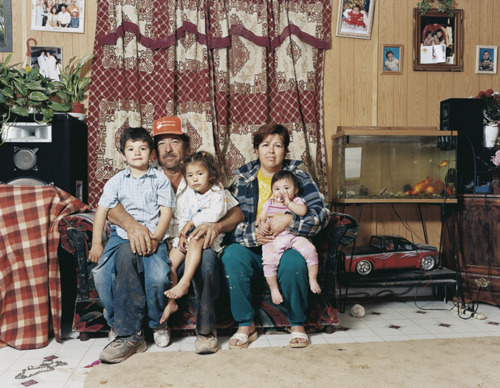

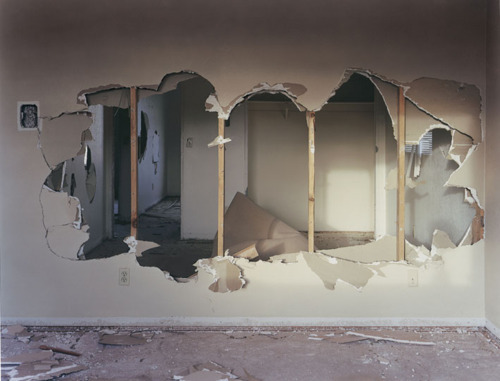
© Andrew Phelps from the series 'Highley', 2007
I’m interested in your project, 'Baghdad Suite' I find a strange tension dwelling in this series, and its not simply because this place is empty, dilapidated, but because there are strong social and political undertones that seep to the surface. This is a place I could only guess as an abandoned training ground for forces to prepare for deployment to Iraq, is this right? The photographs illustrate a sort of stage, a carbon copy of a real place that has faced true turmoil through religious and military violence. There is a false sense of loss in this place, which is greatly ironic in that it represents a place where true loss has occurred.
AP: 'Baghdad Suite' happened in the time frame of about 30 minutes. It seems to be a series that loses mystery the more I talk about it. It is basically a small side project of Higley, a very limited edition book of 100 copies. On my last visit to Higley in 2007 I stumbled upon a 600 meter long main street of an Arabic city film set. It had been deserted and was in a state of demolition. It was late in the day, I had been out all day photographing and had exactly 8 sheets of film left. I crawled over and under 2 fences to get in, knowing that I probably wasn’t supposed to be there. The sun was going down so I rushed to make a total of 8 images, and as I was loading the film plate for the last image I could see, off in the distance a security guard heading my way in a golf cart with a flashing blue light. As I made the last image, I was scolded and asked to leave. I new that I had to try to come back the next day so I returned with a plan of asking for permission to spend a day or 2 photographing. The crazy part is that the very next day, by noon, the entire structure was a pile of wood, being hauled away in big trucks, there was not a wall standing.

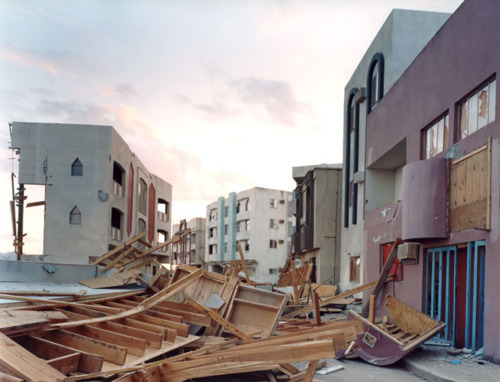
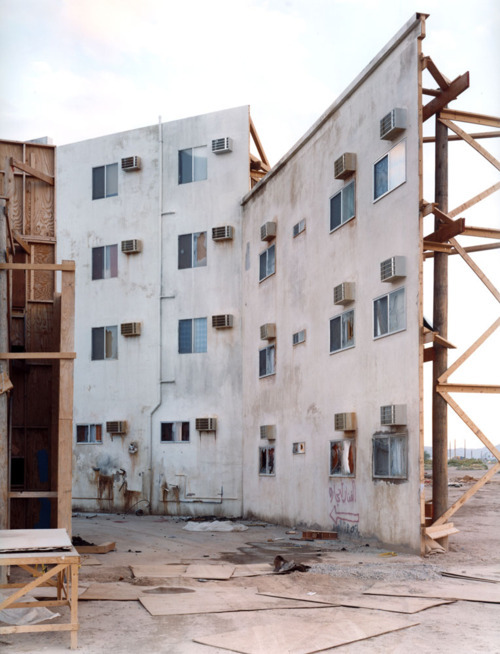
© Andrew Phelps from the series 'Baghdad Suite', 2008
Can you please share your thoughts going into this project? Is there a firm statement you were looking to establish in these photographs?
AP: You are right to hint at the political undertone. Like many people, I was frustrated about the political climate in the US involving the war in Iraq. My work in general is not usually so political, so I think I was looking for a way to stick to my visual language but to make a political work about the disorientation and confusion I felt about the war; why do we believe what we believe? What is the truth? etc. These 8 simple images, combined with the strange half hour I spent in the streets of Baghdad, in the middle of Higley, AZ gave me a chance to make a subtle statement about the middle class American experience of the war in Iraq, our frightening misunderstanding and preconceptions of the Arabic culture. The most ironic element is that when the film was released, it turned out to not even be Baghdad, so in a sense, by simply assuming it was Baghdad, I too had been fooled.
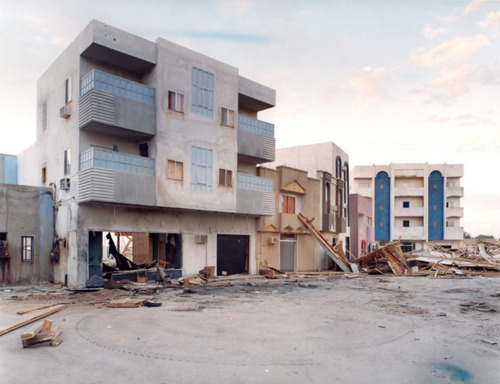
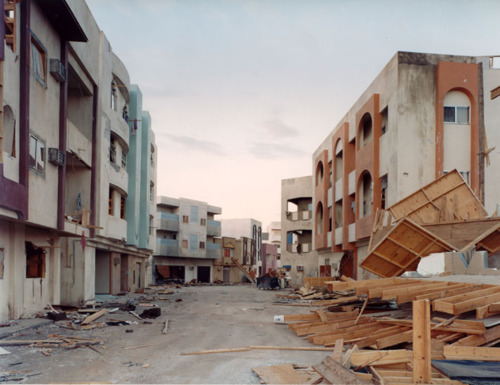
© Andrew Phelps from the series 'Baghdad Suite', 2008
Keeping on the same topic, when viewing this project I am reminded of Gregory Crewdson’s 'Sanctuary' series. With this work, Crewdson photographed the landscape of Cinecittà, an abandoned film studio that carries with it a history intertwined with fascism and avant-garde film. This place you photographed ruminates over contemporary conflict, and suggests that it is a part of a history that is still unfolding. Do you feel that this sense of history, or even a type of back-alley documentation of the Iraq war, is a fair reading of this work?
AP: I’m not so sure about the “back- alley” documentation, but I think what is different to the Sanctuary work is the element of the war; suddenly the Arabic building set is not simply being demolished but instead it has been bombed, its almost impossible to not feel that sense of destruction in a violent way. Crewdson’s Sanctuary is decaying slowly and almost poetic and sometimes melancholic. The buildings in my Baghdad Suite are being torn down in the same way we would demolish a strip-mall, but its that aspect which you mention of history still unfolding that give it that edgy patina.
Switching gears here, I’m also interested in your, 'Not Niigata' portfolio, because you touch upon an issue I find in my own work which is this: Is it really possible to accurately represent a particular place, or a culture, in a still image or in a group of images? I find it a fickle thing to try to understand the essence of a foreign place through image alone. On the contrary, I have found that without the actual experience of being in the place where the photograph occurred, my preconceptions of what that place is like become even more inaccurate. (I learned this during a recent trip to China). Do you think there is always a gap between seeing and understanding? Do you feel that the experiences you had during this trip to Japan are accurately reflected in your photographs?
AP: I think what was pivotal for my position in Niigata, and for the work which came out of the trip, was the fact that I was commissioned to go there and make a work about the place. I think if I was just there traveling, I would have possibly found some small element, maybe something a bit conceptual to concentrate on. But, as it was, I was there for 3 weeks, with realistically only about 18 days to photograph. So I decided to make my work about just that; being immersed in a culture I didn’t claim to understand. I like your statement about the difference between “seeing and understanding”. Robert Adams once said that he has to be familiar with a place in order to work there. But being familiar with a place shouldn’t be confussed with understanding a place. I’m sure Adams never claimed to understand Denver, for example, but he surely felt a certain familiarity with the environment, light, landscape and people. I recognized Niigata . Niigata was very familiar to me; the landscape, the urban sprawl, the rural chaos, the clash of tradition with progress, it contains all of the elements which usually draw me to a place to photograph, but I certainly didn’t “understand” it.
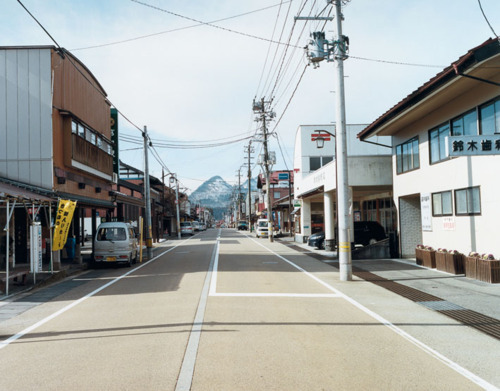
© Andrew Phelps from the series 'Not Niigata', 2009
I think a reason why Niigata felt familiar is because I was just coming off of the Higley project which I had been working on for 4 years and strangely enough Niigata reminded me of Higley; a sprawling agricultural landscape quickly loosing ground to progress, expansion and globalization. To answer the question, I am sure that if I would have travelled to Japan again and again, I would have made different pictures as I would probably have become more aware of the cultural subtleties, but as I decided to make the absurdly short period of time a part of my concept, yes I think the work reflects my experience of Japan.
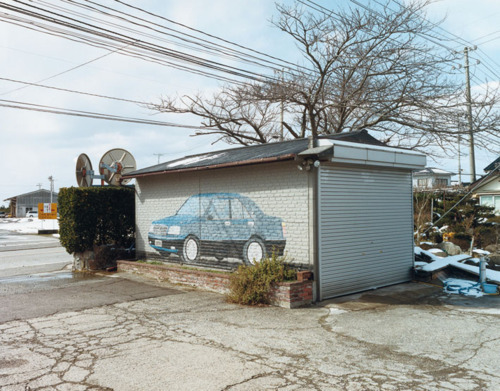

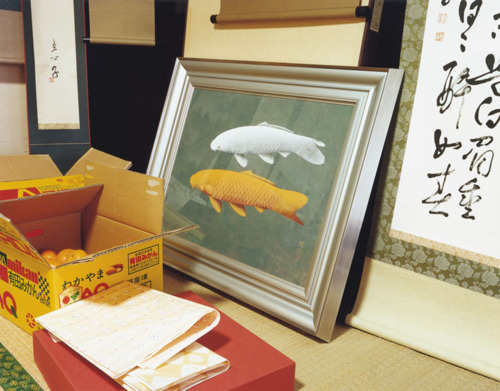
© Andrew Phelps from the series 'Not Niigata', 2009
Lastly, what are you looking forward to over the next year, photographically or otherwise?
AP: 2011 is the year where I have spent half of my life in europe. I am marking this year by photographing in the Alps, something I have never really done since living basically right next to them for 20 years now. So maybe something will come of that.
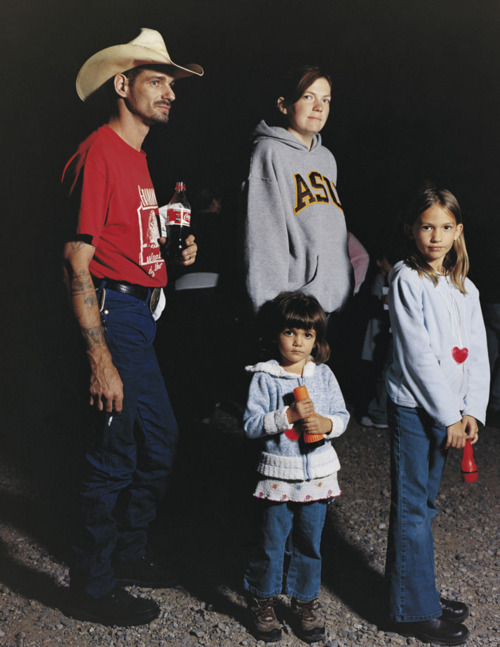
© Andrew Phelps from the series 'Highley', 2007
---
LINKS
Andrew Phelps
United States
share this page